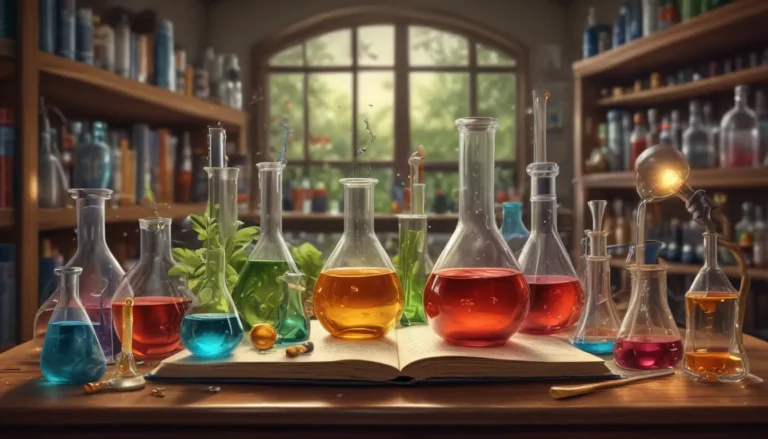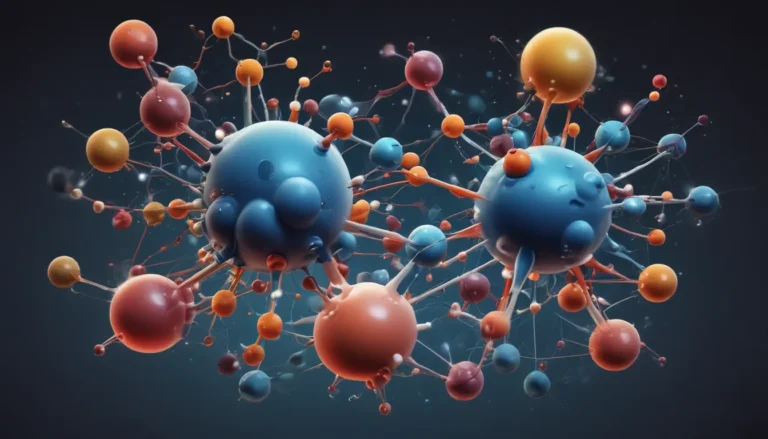A Note About Images: The images used in our articles are for illustration purposes only and may not exactly match the content. They are meant to engage readers, but the text should be relied upon for accurate information.
Are you fascinated by the world of chemistry and intrigued by the mysteries of solutions? Solutions are not just mixtures; they are fundamental concepts that shape our understanding of the chemical world and have incredible applications in various fields. Whether you are a student, a science enthusiast, or simply curious about the wonders of solutions, this article will take you on a captivating journey through 14 astounding facts that will deepen your knowledge and appreciation for this essential concept.
Delving into the World of Solutions
Solutions are homogenous mixtures composed of a solute dissolved in a solvent, creating a uniform and evenly distributed mixture. They can exist in solid, liquid, or gas states, encompassing a wide range of substances and applications in our everyday lives. From cooking and cleaning to electronics and medicine, solutions play a pivotal role in countless processes and industries.
Understanding the Nature of Solutions
-
Homogenous Mixtures: Solutions exhibit uniformity in their composition, with solute particles dispersed evenly throughout the solvent.
-
Versatility of States: Solid, liquid, and gas solutions are all possibilities, showcasing the flexibility and diversity of this concept.
-
Formation Process: Solutions are formed by dissolving solutes into solvents, creating a cohesive mixture of particles.
-
Transparency Variation: The transparency of a solution can vary based on the nature and concentration of the solute, ranging from completely transparent to slightly translucent.
Exploring Concentration and Properties
-
Concentration Metrics: The concentration of a solution can be measured and expressed in various units such as molarity, molality, and mass percent.
-
Separation Techniques: Different methods, including evaporation, distillation, and filtration, can be employed to separate solutes from solutions.
-
Solubility Dynamics: Solubility, influenced by factors like temperature and pressure, determines the maximum amount of solute that can dissolve in a given solvent.
-
Colligative Phenomena: Solutions display colligative properties influenced by the number of solute particles present, leading to effects like boiling point elevation and freezing point depression.
Applications Across Industries and Everyday Life
-
Industrial Significance: Solutions are integral to industries like pharmaceuticals, food and beverage, and chemical manufacturing, facilitating processes such as drug formulation and chemical reactions.
-
Biological Functions: In biological systems, solutions play vital roles in nutrient absorption, waste removal, and cellular functions, contributing to the body’s maintenance of homeostasis.
-
Everyday Utility: Solutions have diverse applications in our daily routines, from cooking and cleaning to personal care products and electronics.
-
Material Synthesis: Solutions are utilized in creating new materials by controlling solute-solvent ratios and conditions to generate innovative substances with desired properties.
Unveiling the Chemical Dynamics of Solutions
-
pH Influence: The pH scale determines the acidity or basicity of a solution, guiding our understanding of its chemical properties.
-
Chemical Reactions: While solutions are homogenous mixtures, solutes and solvents can engage in chemical reactions to produce new substances with distinct characteristics.
Appreciating the Profound Impact of Solutions
Solutions are not just mixtures; they are the building blocks of scientific advancements, industrial innovations, and everyday conveniences. Their intrinsic properties and behaviors shape our understanding of chemistry and fuel discoveries in materials science, medicine, and environmental studies. By comprehending the complexities of solutions, we unlock a world of endless possibilities and applications that enrich our lives and push the boundaries of scientific exploration.
Embracing the Wonder of Chemistry
In conclusion, solutions are not merely mixtures but intricate combinations of solutes and solvents that underpin countless phenomena and processes in our world. From the intricate dynamics of colligative properties to the transformative potential of chemical reactions, solutions offer a tapestry of knowledge and applications that inspire awe and appreciation for the marvels of chemistry. So, the next time you encounter a solution, whether in a laboratory setting or your everyday activities, remember the astounding facts that illuminate the extraordinary nature of this fundamental concept.
FAQs: Exploring Common Questions About Solutions
-
What is a solution in chemistry? A solution is a homogenous mixture comprising a solute dissolved in a solvent, creating a uniform composition throughout.
-
How do solutions form? Solutions form when solute-solvent interactions surpass individual component attractions, enabling solute particles to disperse uniformly in the solvent.
-
What are colligative properties of solutions? Colligative properties depend on solute particle number, leading to phenomena like boiling point elevation and freezing point depression.
-
Can solutions have different concentrations? Yes, solutions can vary in concentration, influenced by solute-to-solvent ratios and expressed in diverse measurement units.
Dive Deeper into the World of Solutions
Solutions are not just mixtures; they are gateways to unraveling the complexities of chemistry and its boundless applications. By immersing yourself in the captivating realm of solutions, you embark on a journey of discovery and enlightenment, broadening your understanding of the chemical world and its profound impact on our lives. Embrace the wonders of solutions, and let their remarkable properties and applications inspire your curiosity and appreciation for the remarkable realm of chemistry.






